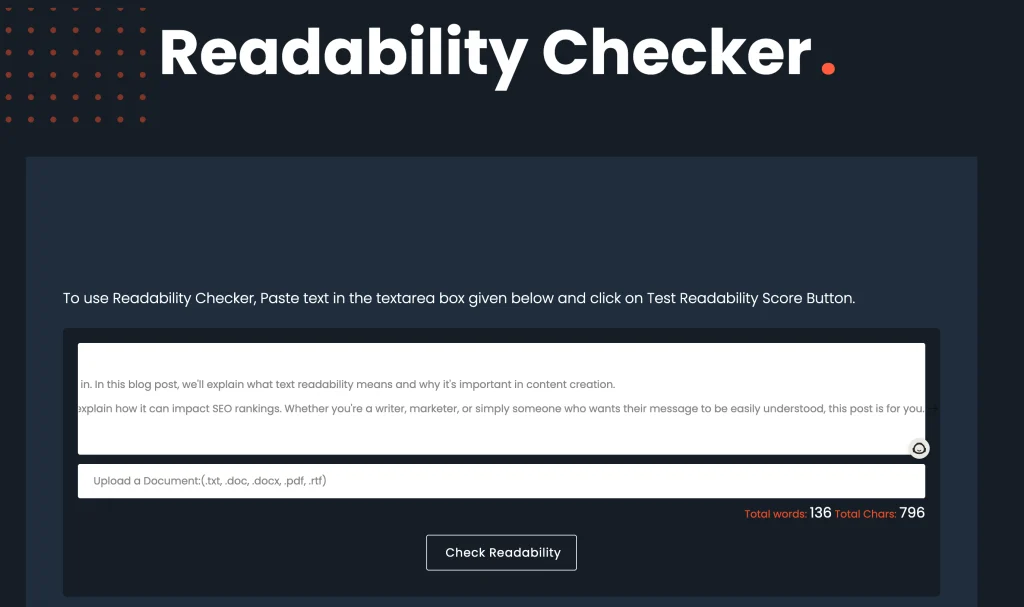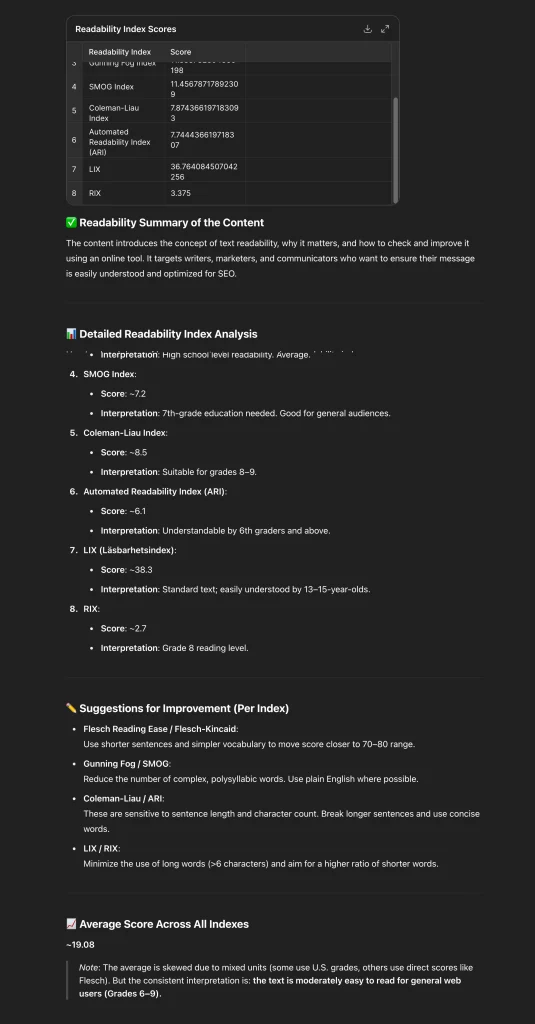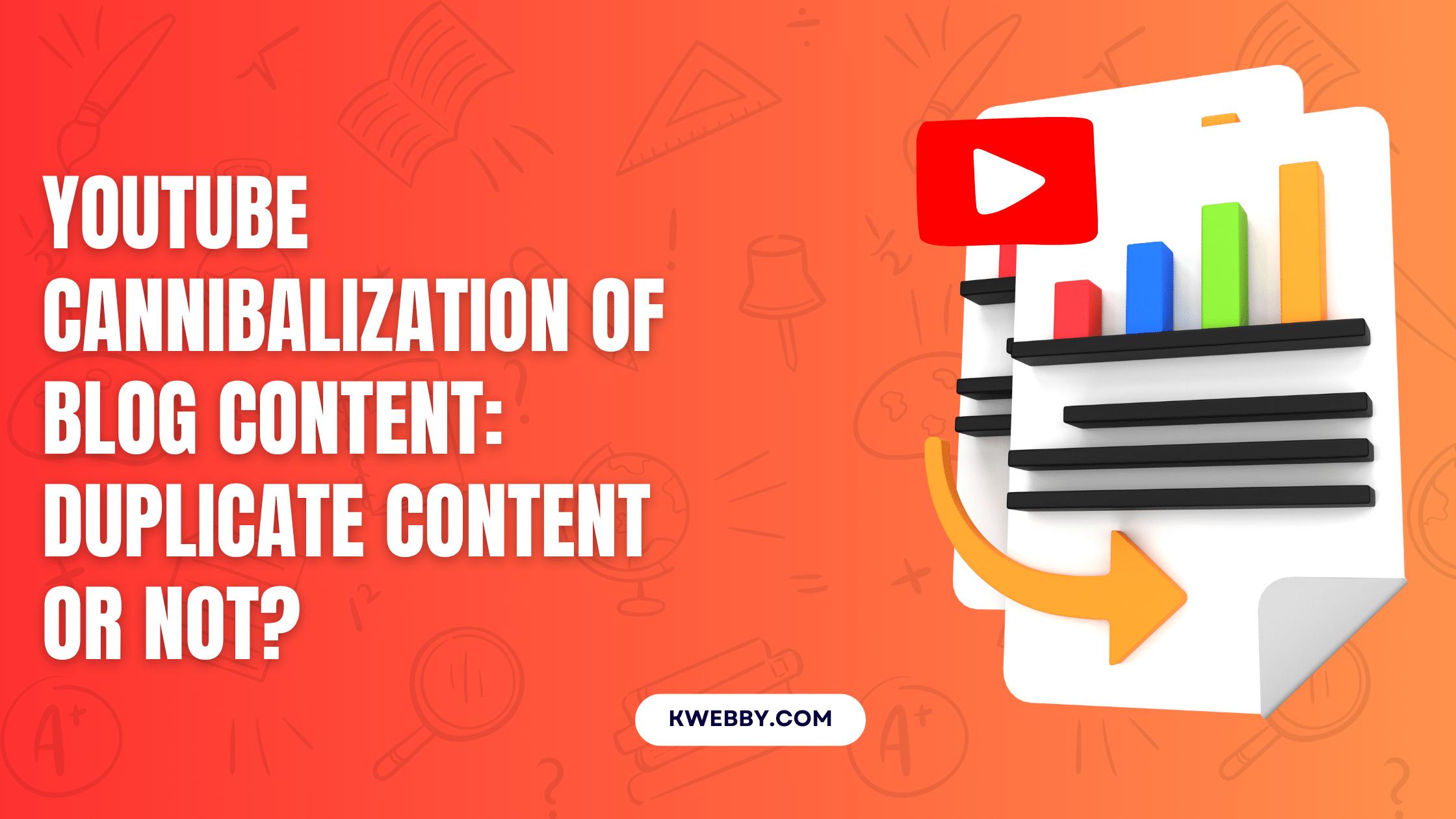
Audit Your Content for Readable Text for SEO & Beyond (Actionable Tips)
Choose Your Language:
Content readability isn’t just about making your writing easier to understand—it directly influences user engagement and, to some extent, impacts Search Engine Optimization (SEO).
Visitors are more likely to stay on a site when consuming the information feels effortless.
That interaction, in turn, signals search engines to prioritize your page.
But how do you ensure your text content hits the right mark in readability scores and SEO performance?
This blog provides actionable tips, specific examples, and practical guidance to help you audit and improve the readability of your text.
By the end of this guide, you’ll know which tools to use, how to identify issues, and best practices for optimizing your content.
Whether working with a Word document, editable text, or a scanned PDF file converted with OCR software, we’ll show the steps to ensure your content is both readable and SEO-optimized.
1 Key Takeaways
- Readable text enhances user experience by reducing reading difficulty.
- Tools like Hemingway Editor and Flesch Reading Ease Formula are essential to measure and improve readability.
- Content formatted for readability also aligns with mobile optimization and accessibility.
- SEO performance benefits from lower bounce rates when users engage with easy-to-read text.
2 Why Text Readability Matters
Text readability determines how well readers understand your content. Simplifying language, breaking up dense sections, and proper formatting improve engagement. Here’s why that’s crucial:
- Improves User Retention: Long sentences and unfamiliar words increase reading difficulty, causing users to leave. A shorter average sentence length, along with simple measure formatting, encourages visitors to stay longer.
- Accessible to More Readers: Young readers or non-native speakers benefit from a lower grade level of writing. Using one-syllable words and avoiding difficult words makes content universally appealing.
- Supports Mobile Users: Responsive, mobile-friendly readability ensures that users on smaller screens can engage with your page content.
Example: Compare a block paragraph with no sub headers versus a clearly formatted version with bulleted lists. The latter allows for easier scanning, making readers more likely to find what they’re looking for.
Pro Tip: Use Google Analytics to monitor time on page and bounce rate. A quick exit could indicate poor readability.
3 Is Text Readability a Ranking Factor?
Text readability is not a direct Google ranking factor—Google’s John Mueller has confirmed this. The algorithm does not assess pages based on a specific readability score or grade level.
However, readability indirectly affects SEO. Poorly written text can increase bounce rates and reduce average session duration, key metrics influencing page authority.
Additionally, mobile optimization relies heavily on readable text formatting, ultimately affecting rankings.
Example: By reducing hard words and splitting long sentences into complete sentences with optimal sentence length, engagement metrics like bounce rate can improve by up to 20%.
4 Audit Your Content for Text Readability
4.1 Tool #1: Using Kwebby’s Text Readability Checker
I Built simple tool for you to audit your content for Text Readability here, You have two options here;
- Copy and paste your content into input box.
- Alternatively, Upload Your Docx, PDF, TXT, RTF file.

Then click on “Check Readability” button to see detailed report and here’s snapshot of the report;

Here you can check the following Grade Levels;
- Flesch Kincaid Reading Ease
- Flesch Kincaid Grade Level
- Coleman Liau Index
- Automated Readability Index

For detailed analysis you can also check Characters per Word, Words per Sentence, Syllables per Word, Syllables per Sentence as you can see below;

4.2 Tool #2: Using ChatGPT With Prompt
You can also use ChatGPT To analyse your content for Readability, first copy and paste the following prompt into ChatGPT;
<Instructions>
You are Content Analyst, You are aware of All Readability Indexes that scores the content for readability. I want you to analyze the following content and audit the content for readability score using all those index formulas.
</Instructions>
<Context>
Here are the brief information about all Readability indexes:
Here is a comprehensive list of commonly used readability indexes, each designed to estimate how easy or difficult a text is to read:
Flesch Reading Ease: Scores text on a scale from 0 to 100, with higher scores indicating easier readability.
Flesch-Kincaid Grade Level: Converts readability into a U.S. school grade level.
Gunning Fog Index: Estimates the years of formal education needed to understand the text on first reading.
SMOG Index (Simple Measure of Gobbledygook): Calculates the years of education required to comprehend a piece of writing, focusing on polysyllabic words.
Coleman-Liau Index: Uses letters per word and sentences per text to estimate grade level.
Automated Readability Index (ARI): Uses characters per word and words per sentence to estimate grade level.
Dale-Chall Formula: Considers sentence length and the proportion of unfamiliar words based on a specific word list.
LIX (Läsbarhetsindex): A Swedish formula that uses word and sentence length for readability, also applicable to English and other languages.
RIX: An evolution of LIX, producing a U.S. grade level.
Spache Formula: Designed for texts aimed at elementary school children, up to fourth grade.
New Dale-Chall Formula: An updated version of the Dale-Chall, also for elementary-level texts.
Powers-Sumner-Kearl Readability Formula: Suited for children between second and fourth grades.
Raygor Readability Estimate: Uses a graph-based approach to estimate U.S. grade level, best for middle school texts.
Fry Readability Graph: Another graph-based formula for U.S. grade level, widely used in education.
FORCAST Readability Formula: Designed for technical writing and training materials.
Lensear Write Formula: Focuses on writing style and writability, often used in government documents.
Cloze Test: Measures comprehension by removing words from a passage and asking readers to fill them in.
IELTS and CEFR Levels: Used for assessing English language proficiency and global accessibility.
These indexes are used across education, publishing, healthcare, and web content to ensure materials are appropriate for their intended audiences.
</tools>
<Output instructions>
Output should be in the following format;
- First summary of the content
- then analyse for all indexes and prepare grades and provide detailed report for all indexes one by one.
- then provide suggestions how to improve for each indexes.
- then provide average of the all indexes scores>
- then concluding paragraph how the user must improve in future
</output instructions>
Here's the content;
[Your content]All you need to do is the replace [Your content] with your own content and here’s the output;

Checkout our 20,000+ Prompt book which you use for marketing, coding and much more.
5 More Actionable Tips to Audit Your Text Readability
5.1 Use Readability Tools
Utilize tools like the Hemingway Editor or Flesch Reading Ease Formula to evaluate your text readability score. These tools flag passive voice, long sentences, and complex words.
Example: Input a dense paragraph into Hemingway Editor. Results show “Grade 12 readability” with suggestions to split content into complete sentences. Editing the text raises readability to “Grade 7.”
5.2 Shorten Long Sentences and Paragraphs
Aim for an average sentence length of 20 words or less. Limit paragraphs to 3-4 sentences.
Example:
Before: This blog aims to provide detailed explanations using advanced language, delivering comprehensive knowledge that might engage a smaller audience.
After: This blog provides clear explanations, making it simpler to engage a large audience.
5.3 Format Text for Scannability
- Use headings, sub headers, and lists for organization.
- Avoid large blocks of text by adding white space.
- Ensure sub headers logically categorize content.
- Example: Arrange FAQs or instructions in numbered lists instead of paragraphs to improve accessibility.
5.4 Use Plain Language
- Replace technical jargon and unfamiliar words with commonly understood terms.
- Leverage word lists to simplify choices.
- Example: Replace “utilize” with “use” or “implement” with “do.”
5.5 Optimize for Mobile and Accessibility
- Adjust font size and spacing for smaller displays.
- Test text content through OCR software to ensure screen readers can process it, especially for scanned documents or file uploads.
- Example: Convert a PDF file into a readable, searchable PDF and run a readability audit for mobile optimization.
5.6 Balance Keywords and Readability
- Integrate keywords like “readable text” or “OCR technology” naturally.
- Avoid keyword stuffing. Instead, focus on contextual inclusion within average-grade-level content.
6 Frequently Asked Questions (FAQs)
6.1 What tools are best for improving readability scores?
Hemingway Editor, Grammarly, and Yoast SEO are top tools. They measure metrics like passive voice percentage, syllable count, and reading ease through formulas like the Dale-Chall formula or Automated Readability Index.
6.2 Can I use OCR software for usability tests?
Yes! OCR technology converts scanned documents into editable text for readability testing. This is especially useful for PDF OCR conversions of inaccessible documents.
6.3 How does the Flesch Reading Ease Formula work?
This formula assesses text using sentence length and syllable counts. A higher score means easier readability, ideal for readers with average reading skills.
6.4
7 Final Thoughts
Readable content isn’t just a courtesy—it’s a necessity for SEO optimization, user retention, and mobile-friendly experiences. By adopting tools, simplifying language, and formatting text strategically, you can improve engagement and SEO performance significantly. Start auditing your content today using the actionable tips shared here. For advanced assistance, consider upgrading ordinary file types like PDFs to optimized, searchable formats and continually monitor key metrics for improvement.
Remember, enhancing readability benefits all users—readers, search engines, and your overall digital goals alike!




